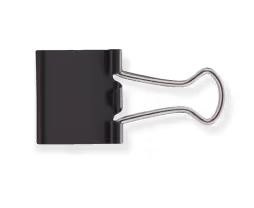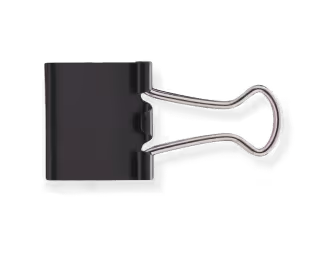A Beginner-friendly Introduction to Experience Map in UX Design
Users rarely say a word when something feels off on your website, they just leave. It’s usually not the product or the price. It’s the experience. One too many clicks, a confusing layout, or an action that doesn’t feel obvious. That’s all it takes.
In fact, nearly 60% of people say they abandon purchases when the experience doesn’t feel easy or relevant. And that number has nothing to do with features. The core conversion bottleneck here is the gaps between user intent and action.
Experience mapping helps you step out of your own flow and see things the way your users do. It shows where people drop off, and more importantly, why. Here’s a no-nonsense guide to UX experience mapping and how to implement your findings to create a user-first website design.
TL;DR:
- Most friction happens between touchpoints, not within them. Users abandon experiences during transitions between channels, devices, or interaction methods rather than struggling with individual interface elements.
- Emotional progression matters more than task completion. Users who complete tasks successfully but feel frustrated during the process are less likely to return or recommend your product to others.
- B2B mapping requires different phase definitions. Business users think in terms of stakeholder alignment, implementation planning, and organizational impact rather than simple purchase decisions.
- Research-based maps outperform assumption-based ones by significant margins. Teams using actual user data create maps that predict user behavior accurately, while assumption-based maps often reinforce existing biases.
- Cross-channel consistency drives retention more than individual channel optimization. Users judge experiences based on their smoothest interaction, making inconsistent touchpoints feel more problematic than they actually are.
- The biggest conversion opportunities exist in pre-purchase anxiety moments. Users often know they want your product but hesitate due to implementation concerns, stakeholder buy-in requirements, or integration complexity.
What Is Experience Mapping in UX?

It’s one of the four core UX mapping methods defined by Nielsen Norman Group. UX experience mapping, also known as customer journey mapping (CJM), is a structured way to visualize how users interact with a product or website from start to finish.
It tracks their actions, decisions, emotions, and potential drop-off points at every stage. By laying out these steps, teams can uncover gaps between what users want and what they’re currently getting.
Experience mapping helps uncover critical insights that enable designers to actualize a user-first website, web app, or product design:
- Points of friction that users silently face: Even if users don't complain, they might struggle with unclear labels, broken flows, or missing information. Mapping reveals where confusion builds up, often where teams least expect.
- Missed user expectations: Users often come in with mental models, expecting things to work a certain way. Mapping lets you see where your design clashes with those expectations.
- Emotional high and low points: It’s not just what users do, but how they feel while doing it. Mapping helps you spot moments where delight turns to frustration, helping teams design with empathy.
- Decision-making delays: If a user hovers, scrolls back, or takes too long on a step, it signals uncertainty. Mapping highlights these moments so you can simplify or clarify what’s needed.
- Breakdowns between screens and channels: Experience maps go beyond one screen. They show how users move across devices or between online and offline steps and where handoffs break down.
Experience mapping sounds straightforward on paper, but the real question is whether it's worth the time investment.
At a time when teams are constantly juggling competing priorities, adding another research method needs solid justification. The only way to figure this out logically is by recognizing how user experience problems compound over time.
Why UX Experience Mapping Is Important
Technology advances and shifting consumer behaviors have created an environment where poor user experience translates directly into lost revenue. Modern users have countless alternatives at their fingertips, making tolerance for friction lower than ever before.
Research consistently shows that user experience quality drives business outcomes more than product features alone. Companies investing in user experience see measurable improvements in conversion rates, customer retention, and overall satisfaction.
The connection between smooth experiences and business success has never been clearer.
Here is a quick summary of how UX experience mapping can directly impact your design’s success:
If you’re looking at your metrics and wondering why engagement isn’t improving despite updates, chances are the problems are buried deeper in the experience. The next section looks at how poor UX shows up in user decisions, sometimes in ways that aren’t immediately obvious.
How Poor UX Affects User Decisions
People visit a site or open an app with a purpose in mind. That intent fades quickly when the experience feels slow, disjointed, or difficult to follow. Success isn’t tied to how many features you offer but to how easily users can complete the task they came for.
Experience problems manifest in several measurable ways:
- Immediate abandonment: Users leave without completing intended actions
- Reduced engagement: People spend less time exploring your product
- Lower conversion rates: Fewer visitors become paying customers
- Negative reviews: Frustrated users share their experiences publicly
- Decreased loyalty: Existing customers become more likely to switch
Each of these blockers chips away at the user’s confidence in your product. And when trust breaks, so does the journey. Below is a more detailed elaboration of how these subtle gaps in experience translate to measurable business loss.
Connection Between Experience Gaps and Business Loss
Without experience mapping, teams usually fix what's visible rather than what's causing the issue.
Let’s say sales on your website are dropping. You fix the pricing page, rewrite CTAs, and test new visuals. Nothing improves. Experience mapping might reveal that users are already confused three steps earlier - on the homepage, when the value proposition doesn’t come through clearly.
Or they might get to checkout and leave because the return policy is buried. The main problem here is the flow.
This disconnect between what users expect and what they experience is where growth quietly slips away. Here’s how it can affect your product, app, or website launch/update timings:
- Misaligned updates: You launch new features that nobody uses, because the real issue was never the lack of features, but the confusion in getting to them.
- Wasted development time: Teams end up fixing what’s loudest, not what’s most impactful. Experience maps tie issues back to the user journey, so prioritization becomes clearer.
- Drop-offs at high-value touchpoints: When users abandon their carts or quit sign-up, it’s rarely about just one page. Mapping shows you how many steps led up to that point of exit.
- Increased support tickets and churn: If users keep reaching out for the same thing, it means something in the experience isn’t working. Mapping helps you trace that frustration back to its source.
Experience mapping is how you shift from reactive patchwork to intentional design decisions. But that raises a practical question: when should you be doing this work? Let’s discuss that next.
When You Should Use Experience Mapping

Experience mapping delivers the most value when applied strategically rather than as a default solution for every UX challenge. Understanding the right timing and context for mapping ensures you invest effort where it will generate meaningful insights and actionable improvements.
1. Early Stage Design
During initial product development, experience mapping helps establish a foundation for user-centered decision making.
At this stage, mapping focuses on understanding user needs and expectations before committing to specific design directions. The process reveals assumptions that need validation and identifies critical user goals that must be supported.
Early-stage mapping typically involves:
- Stakeholder alignment on user priorities and business objectives
- Assumption documentation about user behaviors and preferences
- Opportunity identification for differentiation and value creation
- Risk assessment of potential experience problems before they occur
2. Mid-Stage Design Optimization
When you have existing designs or prototypes, experience mapping helps identify specific improvement opportunities. This application focuses on finding friction points and optimization possibilities within established user flows.
The mapping process at this stage often reveals gaps between intended and actual user experiences.
Mid-stage mapping concentrates on:
- Friction point identification where users struggle or hesitate
- Flow optimization to reduce steps and cognitive load
- Consistency evaluation across different parts of the experience
- Validation preparation for testing specific design hypotheses
3. Post-Launch Experience Analysis
After products go live, experience mapping helps interpret user behavior data and identify areas for enhancement.
This retrospective application combines quantitative analytics with qualitative user feedback to understand why certain patterns emerge. The insights often reveal unexpected user behaviors that weren't anticipated during design.
Post-launch mapping addresses:
- Performance gap analysis between expected and actual user outcomes
- Behavioral pattern interpretation from analytics and user feedback
- Enhancement prioritization based on user impact and business value
- Continuous improvement planning for ongoing experience optimization
Scenarios Where Mapping Adds Maximum Value
Certain situations make experience mapping particularly valuable compared to other UX research methods. Recognizing these scenarios helps teams choose the right approach for their specific challenges and constraints.
- Complex multi-step processes benefit significantly from experience mapping because they involve multiple decision points and potential failure modes. E-commerce checkouts, onboarding sequences, and application processes often contain hidden friction that mapping can reveal.
- Cross-channel experiences where users interact with your product through multiple touchpoints create natural mapping opportunities. The technique helps identify inconsistencies and gaps between channels that users experience as jarring transitions.
- High-stakes user decisions where mistakes or confusion have serious consequences warrant thorough experience mapping. Healthcare interfaces, financial services, and enterprise software often fall into this category.
- Collaborative team environments where multiple disciplines need shared understanding of user experiences benefit from the visual communication that mapping provides. The process creates common vocabulary and reference points for design discussions.
Having said that, at the end of the day, it all boils down to execution. That’s what makes the difference between a useful map and a decorative document that nobody references.
We have refined our mapping process through hundreds of projects, and the steps below reflect what actually works in practice. Each stage builds on the previous one, creating a foundation that supports meaningful insights rather than surface-level observations.
How to Create a UX Experience Map

Building effective experience maps requires a structured approach that balances thoroughness with practicality. We have found that rushing through early stages creates problems later, while over-analyzing details can paralyze progress.
The key lies in methodical preparation followed by focused execution.
Step 1: Build Your User Foundation
Creating accurate user personas forms the foundation of effective experience mapping in UX design. Without solid personas, your map reflects assumptions rather than real user behaviors and motivations.
This step goes deeper than basic demographics - it reveals the psychological drivers that influence decision-making throughout the user journey.
Start by gathering existing user data from multiple sources within your organization.
- Customer service logs
- Sales conversations
- Analytics data,
- Previous research
All contain valuable insights about user behaviors and pain points.
Look for patterns in user complaints, frequently asked questions, and support ticket categories. These reveal friction points that users actually experience rather than theoretical problems.
Focus on creating behavioral personas rather than demographic profiles. Age and location matter less than goals, frustrations, and decision-making patterns.
A 25-year-old and a 45-year-old might have identical behaviors when interacting with your product, making demographic distinctions irrelevant for mapping purposes.
Key elements to document for each persona:
- Primary goals: Users want to accomplish with your product
- Secondary motivations: Underlying reasons driving their primary goals
- Existing alternatives: Other solutions they currently use or consider
- Constraints: Time, budget, or technical limitations affecting their choices
- Success metrics: How they measure whether they've achieved their goals
Step 2: Accumulate Essential User Insights

Research mapping is based on data gathered specifically for building the map, creating the best maps when there is time and resources dedicated to creating a research plan.
We rely on five primary methods, used in combination, to uncover meaningful insights and eliminate blind spots.
1. Contextual Interviews
This method of research works particularly well for experience mapping because it captures environmental factors that influence user behavior. Conduct interviews in the settings where users actually interact with your product.
Home offices, mobile devices, and shared workspaces all create different usage patterns that affect the overall experience.
Focus on open-ended prompts like “Walk me through the last time you tried to complete X”. These sessions aren’t about getting yes/no answers. Aim to understand context, motivation, and the friction users often don’t articulate until they’re mid-task.
Sites like Signal Inc., UX forums on Reddit, and first-hand reflections on Medium are great references for framing these sessions effectively.
2. Usability Tests
We also run usability tests using think-aloud protocols. We ask users to complete tasks while narrating their thought process, which helps us identify not just where they get stuck, but why. These sessions reveal hesitation, mismatched expectations, and emotional reactions - all of which go unnoticed in analytics alone.
To back this with real usage patterns, we review quantitative data like funnel metrics, scroll depth, heatmaps, and rage clicks. This tells us where confusion happens repeatedly, which paths are abandoned, and how far users get before dropping off.
3. Diary Studies
Helps reveal how users' needs and priorities change over time. Users document their experiences over days or weeks, providing insights into patterns that single-session research methods miss.
This longitudinal perspective proves especially valuable for complex products with extended user journeys.
4. Journey Shadowing
This method involves observing users as they complete real tasks with your product. This method reveals the difference between intended and actual user paths, highlighting workarounds and improvisations that users don't typically mention in interviews.
5. Heuristic Review
Finally, we do heuristic reviews, using established usability principles from Nielsen Norman Group - things like system feedback, consistency, and error prevention. It’s a structured way to catch flaws that might not come up in testing but still interrupt the experience.
This triangulation of interviews, observation, analytics, and heuristic analysis gives us a well-rounded view. One method points to a symptom. Three together point to the root cause. That’s the difference between guessing and mapping what’s real.
Step 3: Map the Experience Timeline
Experience maps depict events in chronological order and are split into phases, actions, thoughts, and mindsets/emotions.
The timeline structure provides the framework for organizing all other mapping elements, but defining phases requires careful consideration of user mental models rather than internal business processes.
Think about phases from the user's perspective, not your company's workflow. Users don't think in terms of marketing funnel stages or internal departmental handoffs.
They think about their evolving relationship with the problem they're trying to solve. Phase definitions should reflect these natural progression points in user thinking.
Common phase patterns include problem recognition, solution exploration, evaluation and comparison, decision making, and post-purchase experience.
However, your specific product might require different phase definitions. B2B software often includes phases like stakeholder alignment and implementation planning that don't exist in consumer products.
Phase Definition Guidelines:
- Start with user triggers: External events or internal realizations that prompt action
- Identify decision points: Moments where users choose between different paths forward
- Mark commitment levels: Points where users increase their investment in your solution
- Include resolution points: Where users achieve their goals or abandon their efforts
Step 4: Document User Interactions and Touchpoints
Customer interactions encompass every point where users encounter your brand, product, or service. This extends beyond direct product usage to include marketing materials, customer service contacts, billing processes, and even word-of-mouth recommendations.
Each of the above touchpoints shapes user perceptions and influences future behavior.
Map interactions across all channels and devices. Users rarely complete complex tasks using a single touchpoint. They might discover your product on mobile, research it on desktop, purchase it in-store, and receive support via email.
These cross-channel experiences create opportunities for both seamless experiences and frustrating disconnects.
Document the context surrounding each interaction. Time of day, device type, environmental factors, and user emotional state all influence how interactions unfold.
A rushed mobile interaction during commute differs significantly from a deliberate desktop session at home, even when accessing identical content.
Interaction Mapping Elements:
- Touchpoint sequence: The order in which users encounter different parts of your experience
- Channel switches: Points where users move between devices or interaction methods
- Content consumption: What information users seek and consume at each stage
- Action completion: Tasks users attempt to complete at each touchpoint
- Emotional progression: How user feelings evolve throughout the interaction sequence
Step 5: Spot Friction and Takeaway Triggers
Now we look across every interaction and flag where users slow down, hesitate, or leave. These key friction points might include:
- Mislabelled buttons (“Proceed” instead of “Continue to payment”)
- Overwhelming options on a single page
- Lack of progression feedback (“Shipping info saved” vs. blank screen)
Our friction analysis framework looks like this:
- Cognitive load: Points where users must process too much information simultaneously
- Process complexity: Unnecessarily complicated workflows or decision trees
- Expectation mismatches: Gaps between what users expect and what actually happens
- Context switches: Moments requiring users to shift mental models or change environments
- Error recovery: How well users can correct mistakes and continue toward their goals
For each friction point we identify, we explain:
- Why it disrupts flow (clarity, trust, context)
- How often it happens, based on data
- Which research findings confirm it (quotes, analytics, heatmaps)
By showing both symptoms and evidence, we make it impossible to dismiss these issues lightly.
Step 6: Define Solutions, Validate Improvement
Once the pain points are clearly mapped, the next step is action. But not just any fix will do. Each solution we design is tied directly to a specific problem we’ve uncovered through interviews, observation, or analytics.
That connection is key here as it ensures we’re solving the right problem, not just polishing the interface.
We ask three questions for every fix:
- What exactly is the user struggling with?
- Why is this fix the right approach?
- How will we test that it works?
Let’s say users keep stalling on the checkout page. Here’s how we might break it down:
- Problem: Users click “Proceed” but don’t realise it leads to payment, causing hesitation or drop-off.
- Fix: Change the CTA to “Continue to payment” or “Review order & pay.” Why? Because it aligns better with what users expect at that step.
- How to test: Run quick usability tests with 4–6 participants or A/B test the copy on live traffic. Watch for drop-off improvements and increased confidence in button clicks.
Another example:
- Problem: Users abandon the form halfway through, unsure how much longer it will take.
- Fix: Add a visible progress bar (“Step 2 of 4”) to set expectations and reduce uncertainty.
- How to test: A/B test form versions with and without the progress indicator. Use heatmaps to track completion rates.
Or this:
- Problem: Too many optional fields are cluttering a form and overwhelming users.
- Fix: Cut non-essential inputs or move them to a secondary step. Optional doesn't always mean harmless. It could still add cognitive load.
- How to test: Compare abandonment rates before and after streamlining the form. Also, track average completion time.
You don’t need a complete UX overhaul here. You just need to make small, intentional fixes that directly address friction. And before shipping anything, we build quick mockups or clickable prototypes, run them through another round of testing, and collect feedback.
What works on a whiteboard doesn’t always work in the wild. Real user validation is what separates educated guesses from real solutions.
Once you've completed your experience map, the real work begins. Raw insights don't improve user experiences - strategic application of those insights does. Teams often create beautiful maps that never translate into meaningful product changes. Let’s not let that happen.
How to Use UX Experience Mapping Data
The last step of the experience mapping process is turning insight into action. Without this part, the map becomes just another artifact that sits in a folder.
Here’s how to put your findings to practical use:
Experience mapping gives you a clear picture of where users struggle with your product, but turning those insights into a high-converting SaaS website presents its own challenges.
B2B SaaS buyers move through complex evaluation processes with multiple stakeholders, extended trial periods, and detailed feature comparisons that consumer products never face.
Your mapping data might reveal exactly where prospects lose interest, but translating that knowledge into compelling web experiences requires a deep understanding of SaaS conversion psychology.
Partnering with specialists who focus specifically on B2B SaaS websites helps bridge the gap between user insights and actual conversion improvements.
Build a User-first, Conversion-focused SaaS Website With Beetle Beetle
Experience mapping shows you exactly where potential customers abandon your product before converting, giving teams the clarity needed to make strategic improvements.
If you want a site that moves with your users, not against them, you need a clear understanding of what they’re doing and why, because your competitors are already figuring that out.
At Beetle Beetle, our web design process is built around that exact clarity. We have helped over 100 newly funded and mid-market B2B SaaS companies design sites that convert with intention, not guesswork.
Our UX approach is fully guided by real user data. We rely on interviews, behavior tracking, and focused testing to understand how people actually use your product. Every flow, message, and micro-interaction is shaped to match that behavior, so nothing gets in the way of action.
Ready to build a high-converting, user-driven SaaS site with fewer blind spots? Let’s talk.
FAQs
1. What is experience mapping in UX?
Experience mapping is a structured method to visualise a user's full interaction with a product across all touchpoints to identify friction, drop-off, and missed expectations. It helps align product decisions with how users actually think and behave.
2. How to create a user experience map?
Creating an effective experience map involves six key steps:
- Building accurate user personas based on behavioral patterns rather than demographics.
- Conducting targeted user research through interviews and observation.
- Defining journey phases from the user's mental model perspective.
- Documenting all user interactions across channels and devices.
- Identifying specific barriers that cause hesitation or abandonment.
- Designing solutions that address root causes rather than surface symptoms.
3. When should you use UX experience mapping in the design process?
It’s useful during early concept planning, mid-stage design validation, or post-launch troubleshooting, or any time you're unclear why users are dropping off or are confused.
4. Why is experience mapping important for B2B SaaS websites?
B2B buyers follow more complex, non-linear paths. Experience mapping helps uncover hesitation points and misaligned flows that can quietly affect conversions in long funnels.
































